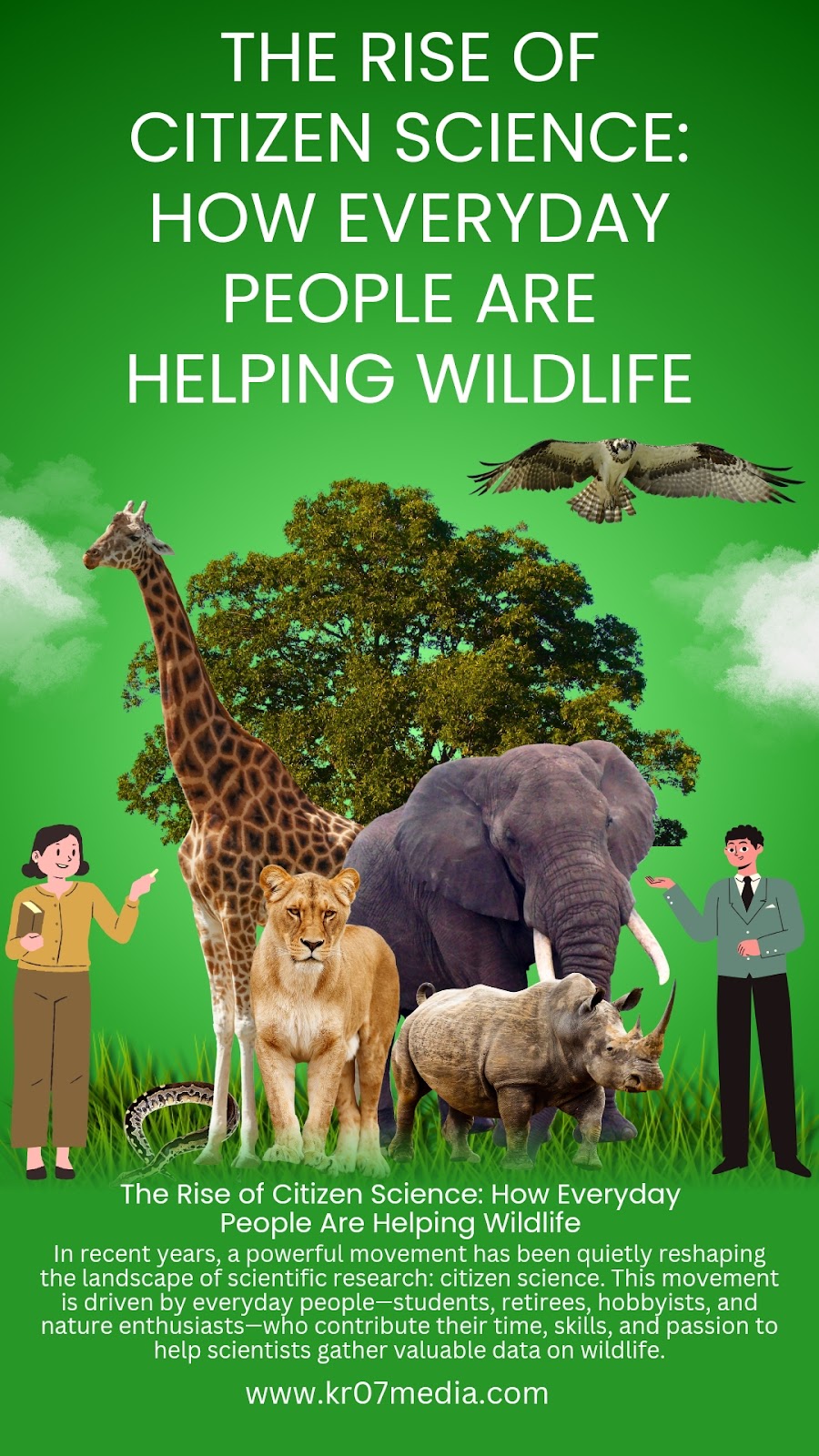In recent years, a powerful movement has been quietly reshaping the landscape of scientific research: citizen science. This movement is driven by everyday people—students, retirees, hobbyists, and nature enthusiasts—who contribute their time, skills, and passion to help scientists gather valuable data on wildlife. As technology becomes more accessible, and as the threats to our environment grow more urgent, citizen science is emerging as an essential force in wildlife conservation.
What is Citizen Science?
Citizen science is a collaborative effort between professional scientists and members of the public to collect and analyze data. In the realm of wildlife conservation, this often involves monitoring species, recording environmental conditions, or even assisting with biological surveys. What sets it apart from traditional scientific research is the scale and reach—citizen science projects can involve thousands of people spread across vast regions, something that would be nearly impossible for a single research team to achieve on its own.
With the rise of mobile apps, online platforms, and community-based initiatives, more people than ever are able to participate in meaningful scientific research. Projects like eBird, iNaturalist, and FrogWatch USA allow volunteers to contribute observations on bird sightings, plant species, and amphibian populations. These databases provide scientists with valuable, real-time data, helping to track species distribution, migration patterns, and population changes on a global scale.
How Citizen Scientists Are Helping Wildlife
1. Tracking Wildlife Populations
One of the most crucial contributions of citizen scientists is in monitoring wildlife populations. For example, birdwatchers participating in eBird upload millions of bird sightings each year. This data helps researchers identify changes in bird migration patterns, population declines, or range shifts caused by climate change.
Similarly, initiatives like the Great Backyard Bird Count and the Christmas Bird Count encourage people to document bird sightings in their local areas. These long-term datasets provide scientists with insights into how bird populations are responding to environmental changes, which helps in making informed conservation decisions.
2. Monitoring Endangered Species
Citizen scientists also play a key role in monitoring endangered and threatened species. Programs like Turtle Watch and Whale Shark Watch rely on volunteers to report sightings of these vulnerable animals. By collecting data on where these species are located and how many are spotted, conservationists can better understand their behavior, habitats, and the threats they face.
This kind of monitoring is particularly vital for species that are difficult to track due to their elusive nature or remote habitats. Citizen science allows for broader surveillance over larger geographical areas, increasing the chances of detecting at-risk species and preventing further population declines.
3. Restoring Habitats
In addition to data collection, some citizen scientists actively participate in habitat restoration. Volunteers work on projects to restore wetlands, plant native vegetation, or remove invasive species. By improving habitats, these efforts contribute to the long-term survival of many wildlife species, particularly those that depend on specific ecosystems for breeding, feeding, and shelter.
For example, in the United Kingdom, volunteers with the Riverfly Partnership monitor water quality by collecting samples of riverflies, which are indicator species for freshwater ecosystems. These activities help keep rivers healthy and ensure that aquatic wildlife thrives.
4. Combatting Climate
Change With climate change becoming one of the most significant threats to wildlife, citizen science projects are helping researchers track its impacts. For example, through initiatives like Nature’s Notebook, volunteers record the timing of seasonal changes in plants and animals, such as blooming flowers, leafing trees, and bird migrations. This phenological data allows scientists to understand how climate change is affecting the timing of biological events, which can disrupt ecosystems and harm species that rely on specific environmental cues for reproduction or migration.
The Benefits of Citizen Science
The rise of citizen science offers numerous benefits, both for wildlife conservation and for the public. By engaging in these projects, participants often develop a deeper connection to the natural world, increasing their awareness of environmental issues and fostering a sense of stewardship. For many, it is an opportunity to contribute to something larger than themselves and to make a tangible impact on the environment.
From a scientific perspective, citizen science provides an enormous quantity of data that would otherwise be unattainable. Researchers are able to track species and ecosystems on a scale that would be logistically impossible with limited funding and personnel. The vast amount of data generated by citizen scientists helps to identify trends, guide conservation efforts, and even influence policy decisions.
Moreover, the diverse backgrounds and experiences of citizen scientists bring fresh perspectives to the field. They are often able to observe patterns or anomalies that may be missed by professional researchers, and their participation broadens the inclusivity of scientific research.
Challenges and Future Directions
While citizen science has immense potential, it also faces challenges. Ensuring the accuracy of data collected by non-experts can be difficult, though many platforms have introduced verification processes to improve reliability. Additionally, some projects require ongoing funding and support to maintain participation levels and expand reach.
Nonetheless, as more people become aware of the opportunities to participate in citizen science, and as new technologies emerge to facilitate data collection, the movement is likely to grow. Governments, academic institutions, and conservation organizations are increasingly recognizing the value of citizen contributions, leading to more collaborative and innovative approaches to wildlife research.
Conclusion
The rise of citizen science marks a new chapter in the relationship between people and wildlife. Everyday individuals, equipped with little more than a smartphone or a pair of binoculars, are helping to protect and conserve species around the world. As we face the growing challenges of climate change, habitat destruction, and biodiversity loss, the collective efforts of citizen scientists offer hope and demonstrate that everyone can play a role in safeguarding the future of our planet's wildlife.



